
Physical Mesomechanics
Scope & Guideline
Fostering collaboration for groundbreaking discoveries in mesomechanics.
Introduction
Aims and Scopes
- Multiscale Modeling of Materials:
The journal explores the mechanical behavior of materials at various scales, from atomic to macroscopic levels, employing models that capture the complexity of material responses under different loading conditions. - Advanced Materials Characterization:
Research often includes in-depth analyses of materials, particularly high-entropy alloys, composites, and coatings, focusing on their mechanical properties, microstructural features, and phase transformations. - Thermomechanical Processes:
A significant emphasis is placed on understanding thermomechanical interactions in materials, including heat treatment effects, strain rate variations, and their implications on material performance. - Seismic and Geological Applications:
The journal includes studies related to geological processes, such as earthquake mechanics, offering insights into the physical processes governing seismic events and fault interactions. - Computational Mechanics:
Innovative computational techniques, including finite element methods and molecular dynamics simulations, are frequently utilized to predict material behavior, fracture mechanisms, and dynamic responses. - Experimental Investigations:
The journal publishes experimental studies that validate theoretical models and simulations, providing empirical data on material behavior under various conditions.
Trending and Emerging
- High-Entropy Alloys and Advanced Composites:
There is a growing interest in high-entropy alloys and advanced composite materials, focusing on their unique mechanical properties and potential applications in various industries, driven by their complexity and performance advantages. - Hydrogen Embrittlement Studies:
Research on hydrogen embrittlement and its effects on material properties has seen a significant rise as industries aim to understand and mitigate hydrogen-related failures in metals. - Additive Manufacturing and Novel Processing Techniques:
The journal has increasingly featured studies on additive manufacturing processes, exploring their impact on material microstructure and properties, reflecting the industry's shift towards more flexible manufacturing methods. - Machine Learning and Computational Approaches:
Emerging trends include the integration of machine learning techniques in modeling and predicting material behavior, showcasing the journal's commitment to innovative computational methodologies. - Environmental and Biodegradable Materials:
There is an increasing focus on the development and characterization of biodegradable materials for environmental applications, reflecting a broader societal shift towards sustainability. - Nanostructured Materials and Coatings:
Research on nanostructured materials and coatings is gaining traction, emphasizing their enhanced properties and potential applications in various fields, from biomedical to aerospace.
Declining or Waning
- Traditional Metallurgy Studies:
There has been a noticeable decrease in papers focused solely on traditional metallurgical processes, such as classic alloy development, as the field shifts towards more complex materials and innovative processing techniques. - Basic Fracture Mechanics:
Research dedicated to fundamental aspects of fracture mechanics is becoming less prevalent, as the focus has shifted towards more complex interactions and multiscale approaches. - Static Mechanical Properties of Conventional Materials:
Studies that concentrate on the static mechanical properties of conventional materials, without consideration of dynamic or thermomechanical effects, appear to be waning in favor of more comprehensive analyses. - Single-Scale Analysis:
There is a decline in interest in single-scale analysis approaches, as researchers increasingly recognize the importance of multiscale interactions in understanding material behavior.
Similar Journals
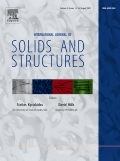
INTERNATIONAL JOURNAL OF SOLIDS AND STRUCTURES
Transforming Ideas into Impactful DiscoveriesINTERNATIONAL JOURNAL OF SOLIDS AND STRUCTURES, published by PERGAMON-ELSEVIER SCIENCE LTD, is a leading academic journal with a strong reputation in the fields of engineering and applied mathematics. Established in 1965 and converging its impact on research through 2024, this journal is highly regarded within Q1 quartile rankings across multiple disciplines, including Applied Mathematics, Condensed Matter Physics, and Mechanical Engineering. With its ISSN 0020-7683 and E-ISSN 1879-2146, the journal is systematically indexed and accessible to a global audience, although it does not currently offer open access options. Researchers, professionals, and students alike benefit from its high-impact research articles, as evidenced by its impressive Scopus rankings in various categories, including a 91st percentile in Applied Mathematics and 81st in Mechanical Engineering. The journal serves as a critical platform for the dissemination of groundbreaking findings in solid and structural mechanics, promoting innovation and collaboration within the scientific community.
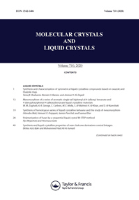
MOLECULAR CRYSTALS AND LIQUID CRYSTALS
Innovating Insights in Molecular and Liquid CrystalsMOLECULAR CRYSTALS AND LIQUID CRYSTALS is a distinguished journal published by Taylor & Francis Ltd, dedicated to the comprehensive examination of the structural and physical properties of molecular crystals and liquid crystals, with applications spanning fields such as chemistry, materials science, and condensed matter physics. Established in 1972, this journal has carved out a niche in the academic landscape despite facing recent challenges, as reflected in its current quartile rankings of Q4 across multiple categories in 2023. The journal not only serves as a platform for groundbreaking research but also invites contributions that further explore the intricate relationships between molecular organization and material properties, thereby advancing our understanding of these fascinating substances. With a commitment to fostering scientific dialogue, MOLECULAR CRYSTALS AND LIQUID CRYSTALS aims to reach a broad audience of researchers, professionals, and students, providing insights that are pivotal in driving innovation in materials research.

KOVOVE MATERIALY-METALLIC MATERIALS
Connecting Global Insights in Materials ScienceKOVOVE MATERIALY-METALLIC MATERIALS, published by REDAKCIA KOVOVE MATERIALY, is a prominent journal embedded within the field of materials science, focusing particularly on metallic materials. With a history dating back to 1968, this Slovakian journal has made significant contributions to the understanding of materials chemistry, mechanical engineering, and the mechanics of materials. While currently classified in the Q4 category for Materials Chemistry and Mechanical Engineering, and Q3 for Metals and Alloys, it aims to provide a platform for high-quality research and novel findings in these domains. Furthermore, the journal is indexed within Scopus, reflecting its engagement with the global scientific community and its role in disseminating pivotal studies. Researchers, professionals, and students will find crucial insights and developments in the field, making it a valuable resource for those seeking to enhance their understanding of metallic materials and their applications.

ARCHIVES OF MECHANICS
Bridging Theory and Application in MechanicsArchives of Mechanics, published by the Polish Academy of Sciences Institute of Fundamental Technological Research, is a distinguished open-access journal established in 1971 that has played a pivotal role in the dissemination of knowledge in the fields of Mechanical Engineering and Condensed Matter Physics. With its commitment to accessibility since adopting open access in 2022, this journal provides a platform for researchers, professionals, and students to share cutting-edge research findings and innovative methodologies. Although it currently holds a Q4 ranking in Condensed Matter Physics and a Q3 ranking in Mechanical Engineering for 2023, its comprehensive scope, which spans critical advancements in mechanical systems and materials science, positions it as a valuable resource for the academic community. Located in Warsaw, Poland, the journal continues to contribute significantly to the global discourse on mechanics and is dedicated to fostering new ideas that advance both theoretical and applied aspects of the discipline.

METALLURGICAL AND MATERIALS TRANSACTIONS A-PHYSICAL METALLURGY AND MATERIALS SCIENCE
Bridging Theory and Application in Metallurgical ResearchMETALLURGICAL AND MATERIALS TRANSACTIONS A - PHYSICAL METALLURGY AND MATERIALS SCIENCE, published by Springer, is a prestigious journal that plays a pivotal role in advancing the fields of physical metallurgy and materials science. With an ISSN of 1073-5623 and an E-ISSN of 1543-1940, this American journal provides a vital platform for disseminating cutting-edge research and innovative findings relevant to condensed matter physics, mechanics of materials, and metals and alloys. The journal, indexed with an impressive Q1 ranking in multiple categories in 2023, ensures its position among the top-tier publications, making it an essential resource for researchers, professionals, and students alike. Spanning decades of invaluable contributions since its inception in 1975, METALLURGICAL AND MATERIALS TRANSACTIONS A focuses on fostering academic dialogue, promoting collaboration, and showcasing leading-edge discoveries that drive the materials science community forward. Researchers seeking to publish their work in a highly visible forum will find this journal an optimal choice for reaching a discerning audience.
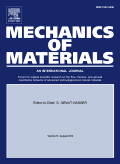
MECHANICS OF MATERIALS
Exploring Innovations in Material Properties and ApplicationsMECHANICS OF MATERIALS, published by ELSEVIER, is a premier international journal serving the dynamic fields of Materials Science and Mechanics. With an esteemed reputation reflected in its 2023 Quartile rankings—Q1 in Instrumentation, Q1 in Materials Science (miscellaneous), and Q1 in Mechanics of Materials—this journal offers a vital platform for the dissemination of cutting-edge research from 1982 to the present. Operating from its headquarters in Amsterdam, Netherlands, the journal boasts impressive Scopus ranks, including 22nd in Physics and Astronomy (Instrumentation) and 67th in Engineering (Mechanics of Materials), placing it firmly within the top echelons of academic publishing. Though not an open-access journal, its rigorous peer-reviewed content ensures high-quality contributions aimed at advancing knowledge and application in mechanics and materials. Researchers, professionals, and students are encouraged to engage with the latest studies and findings that underpin innovations in material properties, testing methodologies, and engineering applications, reinforcing the journal’s critical role in shaping the future of the discipline.

METALS AND MATERIALS INTERNATIONAL
Connecting researchers to the forefront of materials science.METALS AND MATERIALS INTERNATIONAL, published by the Korean Institute of Metals and Materials, is a prestigious journal dedicated to the advancement of research in the fields of materials science and engineering. With an ISSN of 1598-9623 and a robust e-ISSN of 2005-4149, this journal has established itself as a crucial platform for disseminating innovative findings and key advancements that span condensed matter physics, materials chemistry, mechanics of materials, and the technology of metals and alloys. Its Q1 rankings in multiple categories attest to its high impact and relevance in the academic community, placing it among the top journals in its fields with Scopus rankings that reflect a strong international footprint. Here, researchers, professionals, and students can access cutting-edge research and insights, fostering collaboration and exploration of new materials and their applications. With a commitment to excellence and a convergence of knowledge from 1996 to 2024, METALS AND MATERIALS INTERNATIONAL continues to enhance our understanding of materials and their transformative impact on technology and engineering.
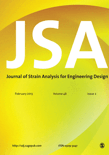
JOURNAL OF STRAIN ANALYSIS FOR ENGINEERING DESIGN
Exploring the Mechanics of Tomorrow’s Engineering Challenges.The Journal of Strain Analysis for Engineering Design, published by SAGE Publications Ltd, is a prestigious academic journal that has been at the forefront of *engineering and applied mathematics* research since its inception in 1965. With a focus on the intricate analysis of strain in engineering design, this journal serves as a vital resource for researchers and professionals seeking to push the boundaries of understanding in mechanics and materials engineering. As of 2023, it enjoys a respectable ranking in its respective fields, including Q2 in *Mechanical Engineering* and *Mechanics of Materials*, and Q3 in *Applied Mathematics* and *Modeling and Simulation*, reflecting its significant contribution to the academic community and relevance in practical applications. Although it is not an open-access journal, its rigorous peer-review process ensures the dissemination of high-quality research. The journal provides a platform for innovative ideas and methodologies, fostering advancements in engineering design and analysis vital for both academia and industry. By bridging theoretical foundations with real-world applications, the Journal of Strain Analysis for Engineering Design remains an essential publication for those dedicated to addressing the complexities of modern engineering challenges.

Journal of Applied Mechanics and Technical Physics
Connecting Scholars to the Future of Applied PhysicsJournal of Applied Mechanics and Technical Physics is a distinguished publication that serves as a vital resource for researchers and professionals in the realms of mechanical engineering, mechanics of materials, and condensed matter physics. Published by MAIK NAUKA/INTERPERIODICA/SPRINGER, this journal has been committed to disseminating high-quality research since its inception in 1965. With a noted presence in the academic community, it holds a respectable Q3 ranking in multiple categories as of 2023, indicating its relevance and contribution to the field. Although it does not currently offer open access, the journal provides valuable insights and advancements through its rigorous peer-review process. Covering a broad spectrum of topics in applied mechanics and technical physics, it aims to foster innovation and dialogue among scientists, engineers, and scholars alike. Located in the United States, the journal continues to make significant strides in bridging the gap between theoretical research and practical applications, making it an essential read for anyone engaged in these dynamic fields.
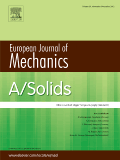
EUROPEAN JOURNAL OF MECHANICS A-SOLIDS
Charting New Territories in Material PhysicsThe EUROPEAN JOURNAL OF MECHANICS A-SOLIDS, published by ELSEVIER and based in the Netherlands, stands as a premier outlet for research in the field of solid mechanics. With an impressive track record since its inception, the journal has been indexed in prestigious categories including Materials Science, Mechanical Engineering, and Mathematical Physics, achieving Q1 quartile status across these domains in 2023. This recognition underscores the journal's impact, with Scopus rankings placing it in the top echelon of its respective fields, such as #39 in General Physics and Astronomy and #116 in Mechanical Engineering, demonstrating its significance and wide-reaching influence in the academic community. Scientists, engineers, and researchers are encouraged to submit their cutting-edge findings in areas related to solid mechanics, contributing to the journal's mission of advancing knowledge and innovation in this vital discipline. The journal's comprehensive scope allows for interdisciplinary engagement, making it an essential resource for professionals and students alike seeking to explore the latest developments in mechanics of materials and related areas.